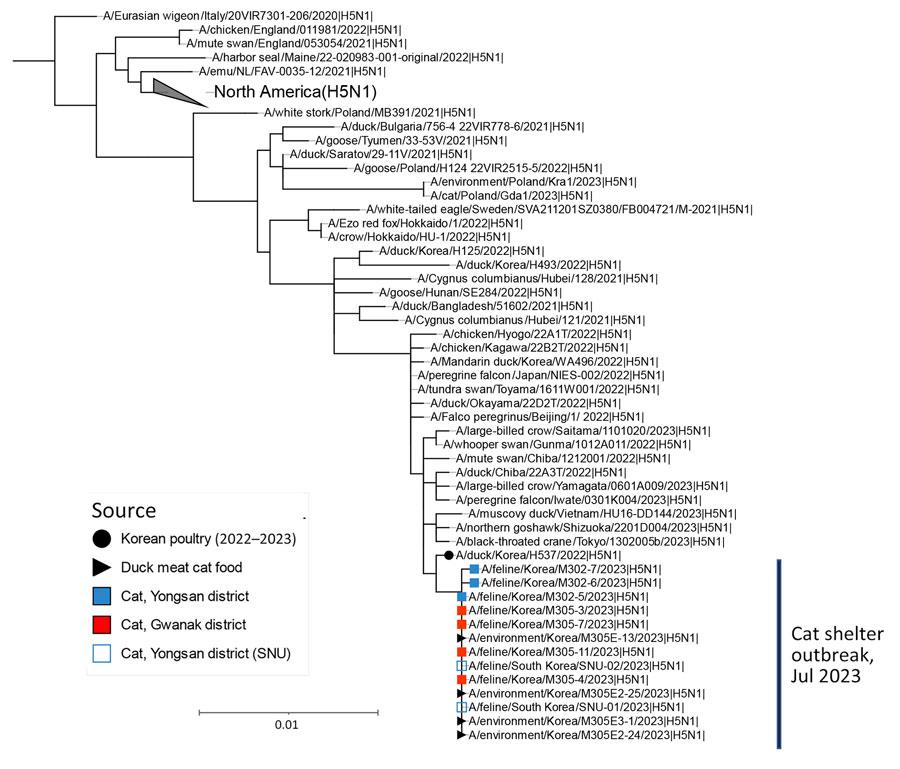Highly Pathogenic Avian Influenza A(H5N1) Virus Infection in Cats, South Korea, 2023
Yong-Myung Kang
1, Gyeong-Beom Heo
1, Se-Hee An, Hyunho Lee, Eunhye Park, Ra Mi Cha, Yun Yueng Jang, Mingeun Sagong, Ah-Young Kim, Jongho Kim, Eun-Kyoung Lee, Seong Hee Kim, Kyungki Lee, Bokkyung Ku, Youn-Jeong Lee, Kyunghyun Lee

, and Kwang-Nyeong Lee

Author affiliation: Animal and Plant Quarantine Agency, Gimcheon-si, South Korea (Y.-M. Kang, G.-B. Heo, S.-H. An, R.M. Cha, Y.Y. Jang, M. Sagong, A.-Y. Kim, J. Kim, E.-K. Lee, S.H. Kim, Kyungki Lee, B. Ku, Y.-J. Lee, Kyunghyun Lee, K.-N. Lee); Kyungpook National University, Daegu, South Korea (Y.-M. Kang); Seoul National University, Seoul, South Korea (G.-B. Heo); Seoul Metropolitan Government Research Institute of Public Health and Environment, Gwacheon-si, South Korea (H. Lee, E. Park)
Main Article
Figure 3

Figure 3. Maximum-likelihood phylogenetic tree for the neuraminidase (NA) gene in study of highly pathogenic avian influenza virus A(H5N1) infection in cats, South Korea, 2023. The phylogenetic tree is based on sequences of H5N1 NA sequences of viruses isolated recently, as well as on the HA gene sequence of other H5Nx viruses. Bootstrap values (1,000 replicates) >70% are displayed at the branch nodes. The black circle denotes virus isolated from poultry in South Korea, 2022–2023, and the black triangle denotes viruses isolated from raw duck meat used for cat food. The blue shaded square denotes viruses isolated from cats in shelter 1, and the red square indicates viruses isolated from cats in shelter 2. The blue outlined square indicates viruses isolated from cats in shelter 1 by SNU. Scale bar indicates number of nucleotide substitutions per site. SNU, Seoul National University.
Main Article
Page created: October 01, 2024
Page updated: November 26, 2024
Page reviewed: November 26, 2024
The conclusions, findings, and opinions expressed by authors contributing to this journal do not necessarily reflect the official position of the U.S. Department of Health and Human Services, the Public Health Service, the Centers for Disease Control and Prevention, or the authors' affiliated institutions. Use of trade names is for identification only and does not imply endorsement by any of the groups named above.
